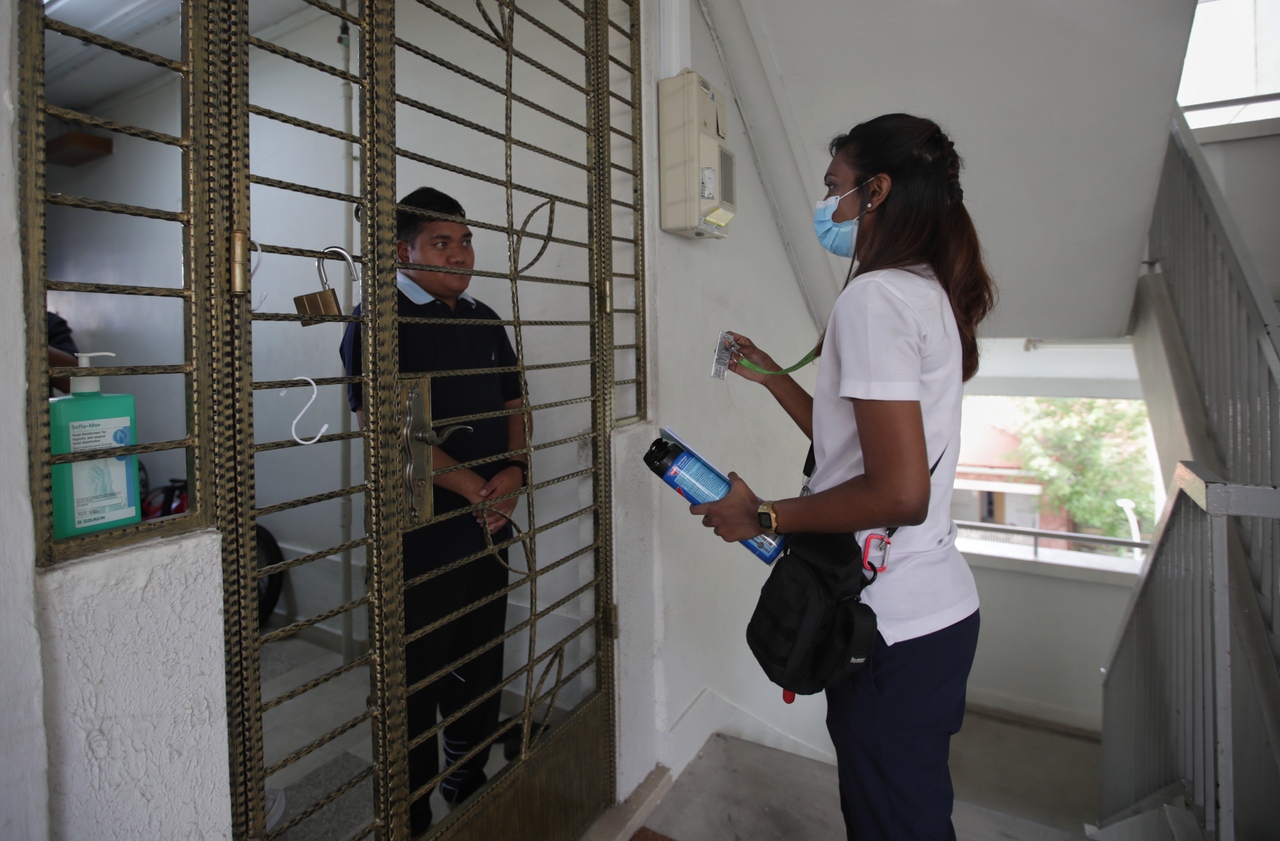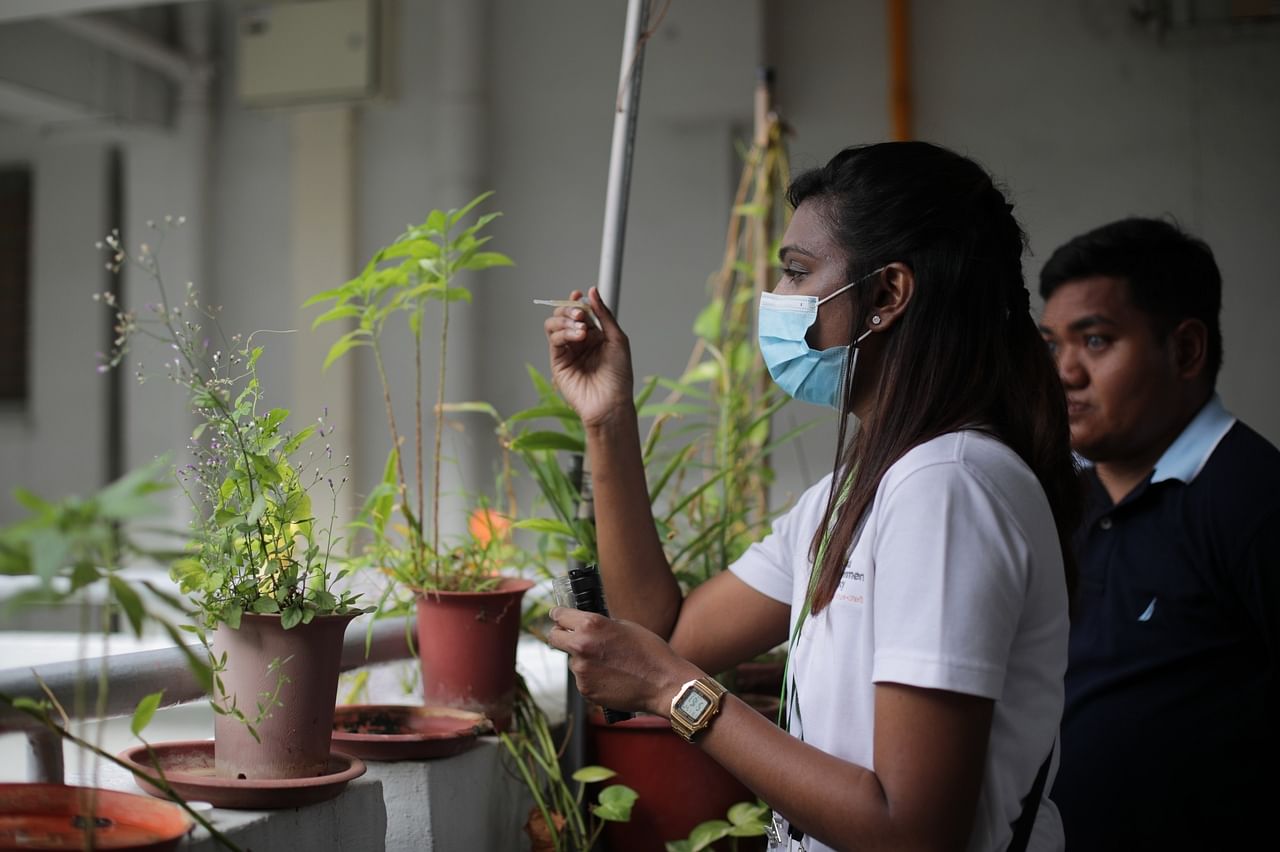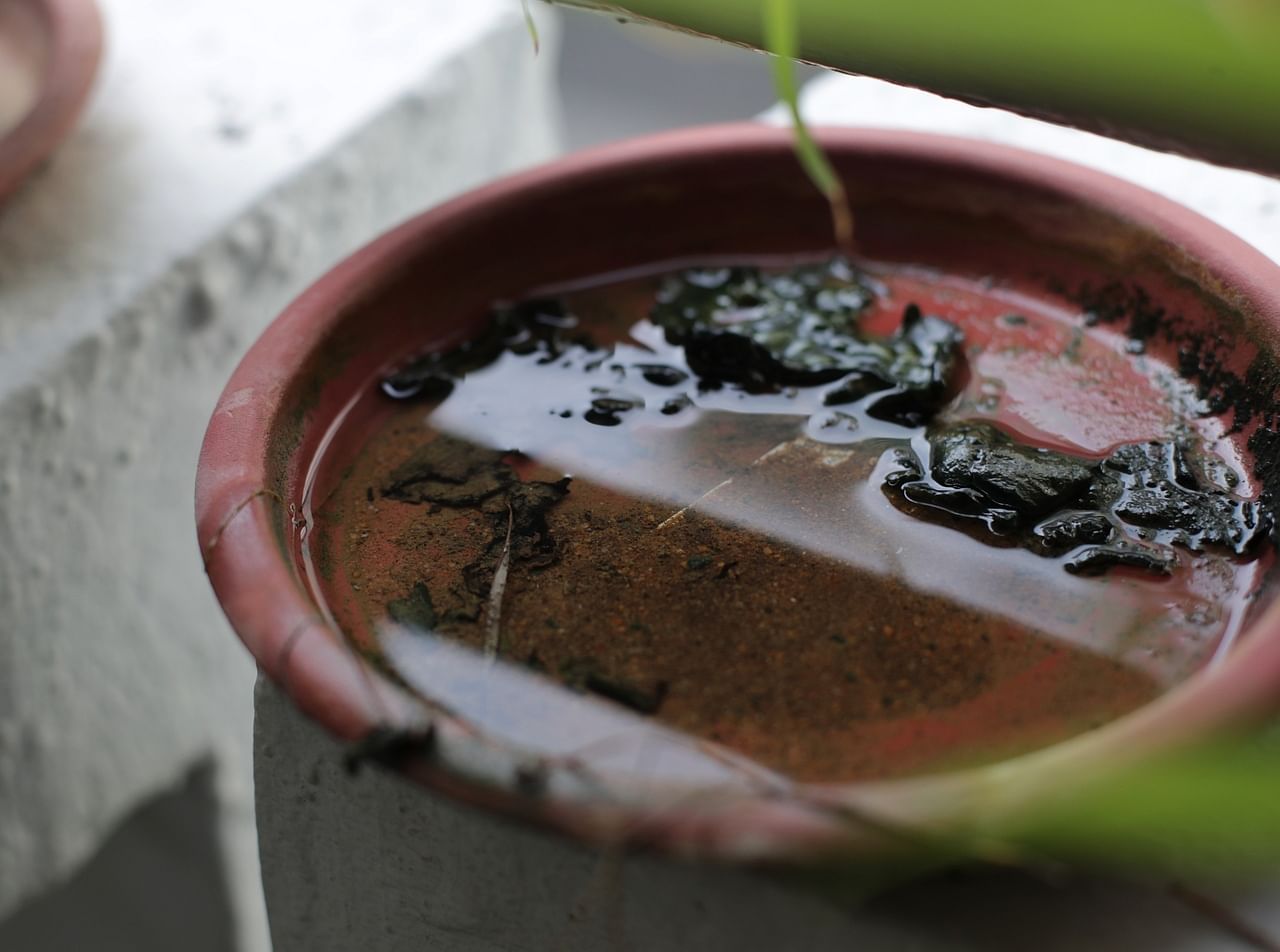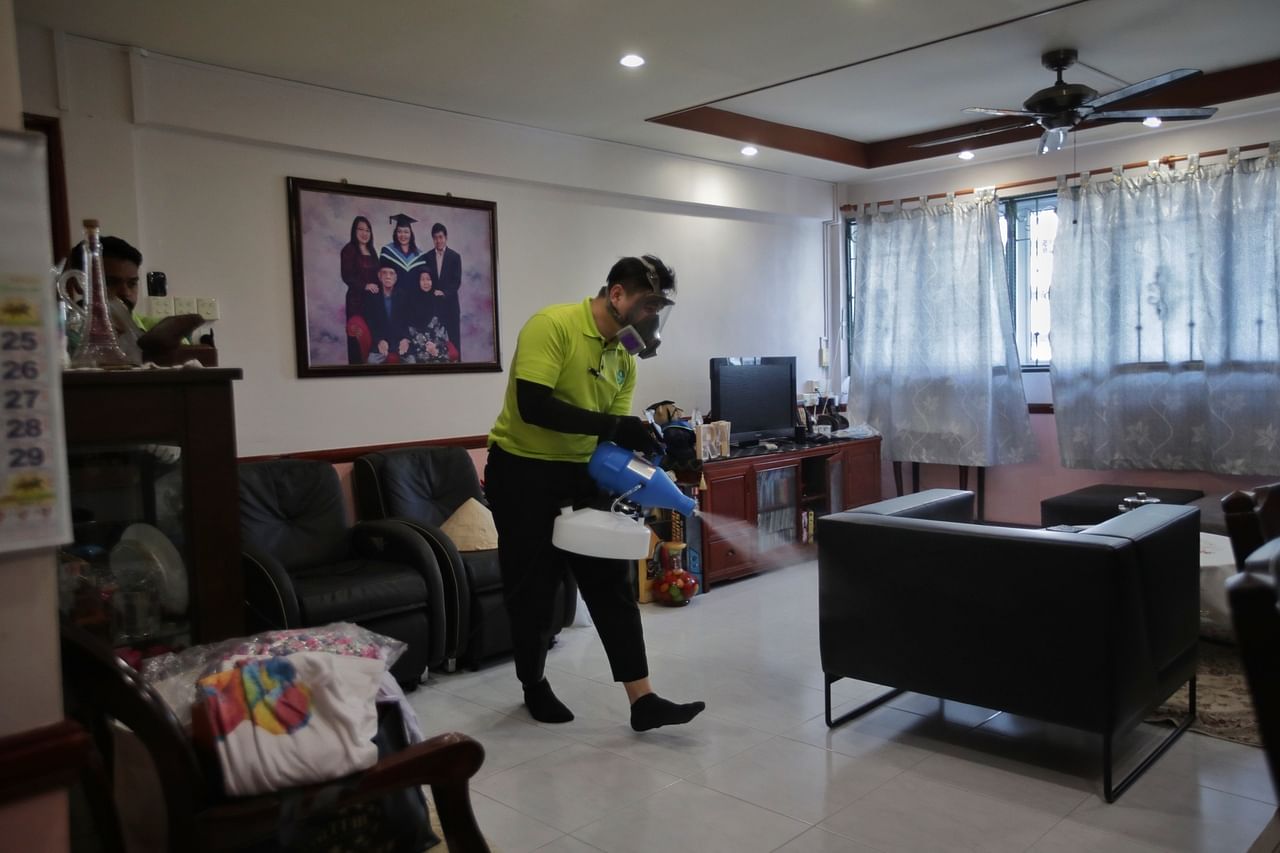Dengue on the rise: What to expect when NEA knocks on your door for an inspection
Sign up now: Get ST's newsletters delivered to your inbox

When an NEA officer like Ms Sindhusha Selvakumar visits a unit, she will introduce and identify herself as an NEA officer by showing an NEA authority card.
ST PHOTO: GIN TAY
Timothy Goh
Follow topic:
SINGAPORE - Knock knock. Who's there? It's an officer from the National Environment Agency (NEA), who is here to check your home for mosquito breeding spots.
As dengue cases continue to rise around the island, Minister for Sustainability and the Environment Grace Fu said on Wednesday (June 15) that individual and community responsibility are the most critical elements of dengue control here.
The Straits Times followed NEA inspection officer Sindhusha Selvakumar to a dengue hot spot in Little India to see what happens when the NEA comes knocking.
Entering the premises
NEA officers decide which homes to inspect based on the number of mosquitoes caught in gravitraps designed to attract female Aedes mosquitoes which spread dengue. The officers also take into account feedback received, as well as the presence of dengue cases in the area.
However, when there is a surge in dengue cases, the officers will focus their resources on homes with dengue cases, or within dengue clusters, explained Ms Sindhusha.
When an NEA officer like Ms Sindhusha visits a unit, she will introduce and identify herself as an NEA officer by showing an NEA authority card.
Residents who wish to verify officers' identities may call NEA on 6225-5632 before letting the officers into their homes.
Officers can enter a home only after a resident has given consent, and will have to be accompanied by the resident throughout the entire inspection process.
"Some residents have the misconception that we go with the intention of (issuing fines). Our intention is purely to eliminate any possible mosquito breeding sites. This is a very serious public health concern, so we go there to... contain the dengue cluster," said Ms Sindhusha.

Inspection
After entering a home, Ms Sindhusha checks the areas where mosquitoes may potentially breed.
These include the dishwashing area in the kitchen, dish drying rack, under the sink, pails in the toilet, toilet cistern, and any plants inside and outside the home.


The entire inspection process usually takes up to 15 minutes, depending on the layout of the home, said Ms Sindhusha.
She added that flowerpots are some of the most common breeding spots of mosquitoes.
Once the inspection is done, she sprays pesticide in dark corners of the home where mosquitoes may be lurking.
If a mosquito breeding spot is found, she will point it out to the resident and use an empty vial to collect a sample of the mosquito larvae or pupae.
The vial will be sealed and sent to a laboratory for testing.


An NEA officer may also ask the resident to present his identification card so she can take down the details as it is an offence to breed mosquitoes.
The officer will not issue a fine on the spot. A fine will be issued at a later date if the sample in the vial is found to contain mosquitoes or other vectors.
Education
During Ms Sindhusha's visits, she also gives residents advice on steps they can take to prevent mosquito breeding, and shows them how to apply insect repellent properly.

Ultra-Low Volume (ULV) misting
At times, if a home is located in an active dengue cluster, an NEA officer may ask the resident if he is willing to have ULV misting carried out on the premises.
This involves a contractor spraying pesticide around the home to kill mosquitoes and is done free of charge, usually on a separate day.
Checking 30 to 50 homes a day
The day in the life of an inspection officer is a tiring one. Ms Sindhusha said an officer typically has to check about 30 to 40 homes a day. The number may sometimes go up to 50, depending on the estate the officer is assigned to.
Besides constantly having to enter dengue hot spots, spotting mosquito breeding areas is also a difficult task, as Aedes mosquitoes need only a volume of water the size of a 20-cent coin to breed.
But these are not the only challenges the officers face.
"Once we find mosquito breeding habitats and engage the residents, most of them refuse to acknowledge that they have created conditions favourable to (mosquito breeding)," said Ms Sindhusha. She added that at times, some residents would try to stop the officers from continuing their inspections.

She said that the officers will try to defuse the situation by explaining that the purpose of their visit is not to pin blame on the residents, but rather to remove any mosquito breeding habitats.
"When we explain that we're doing our job (to look after) public health and safety, most of them will oblige," she said.
She added: "My one wish is for residents to see us as partners, so we can come together and fight dengue."

